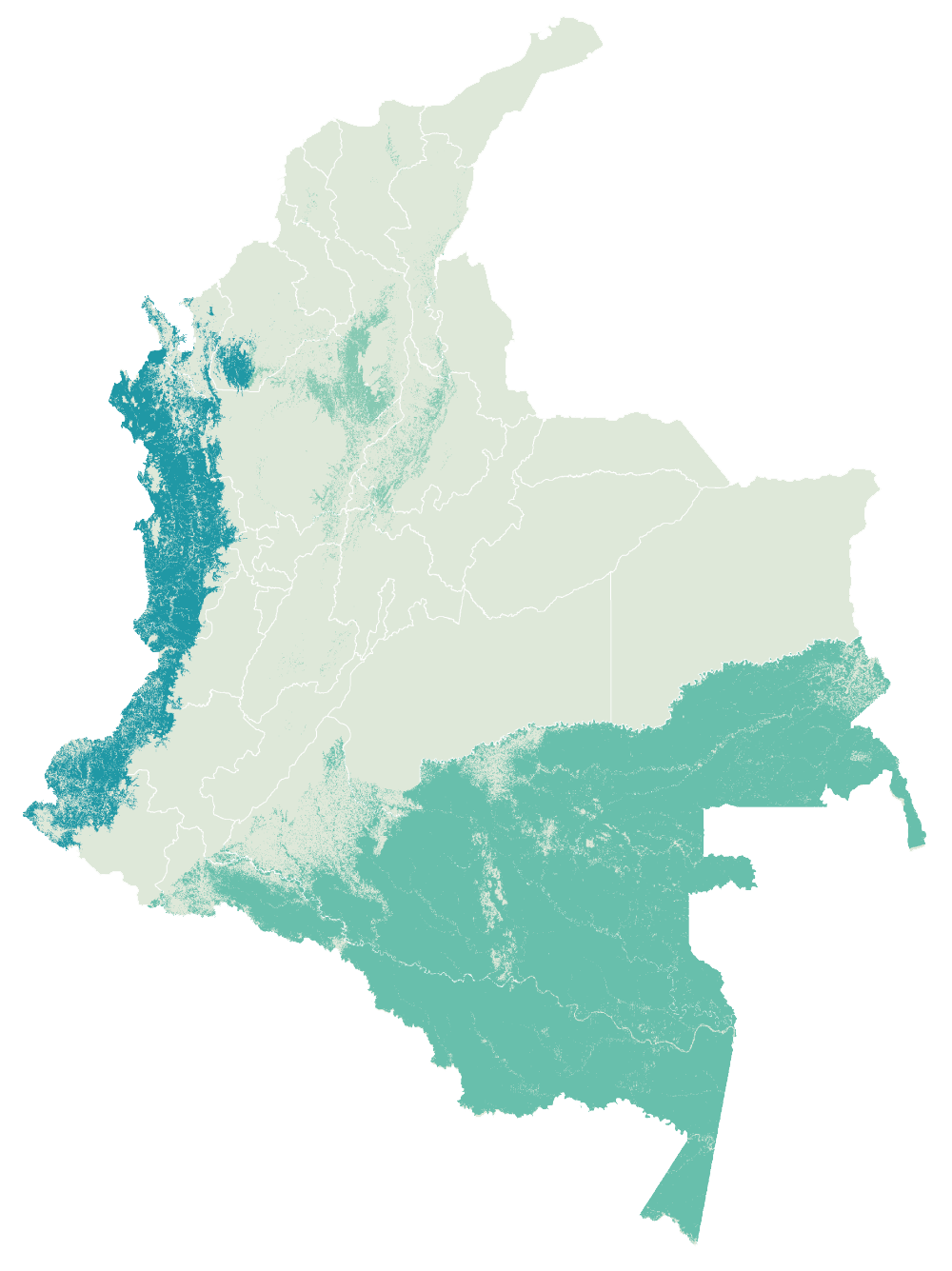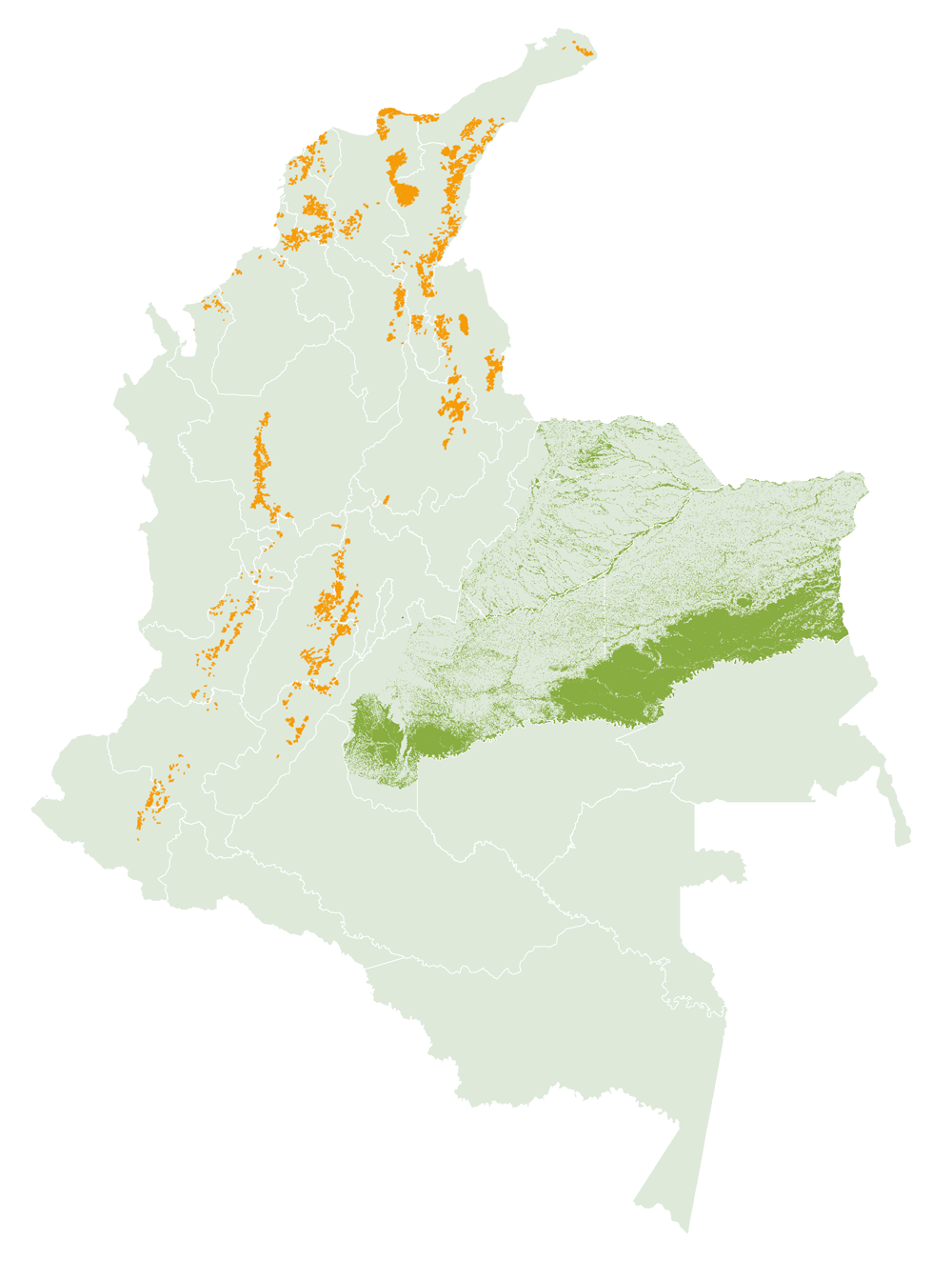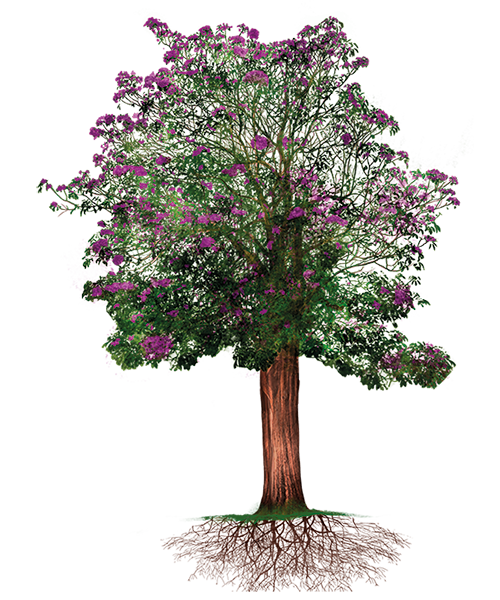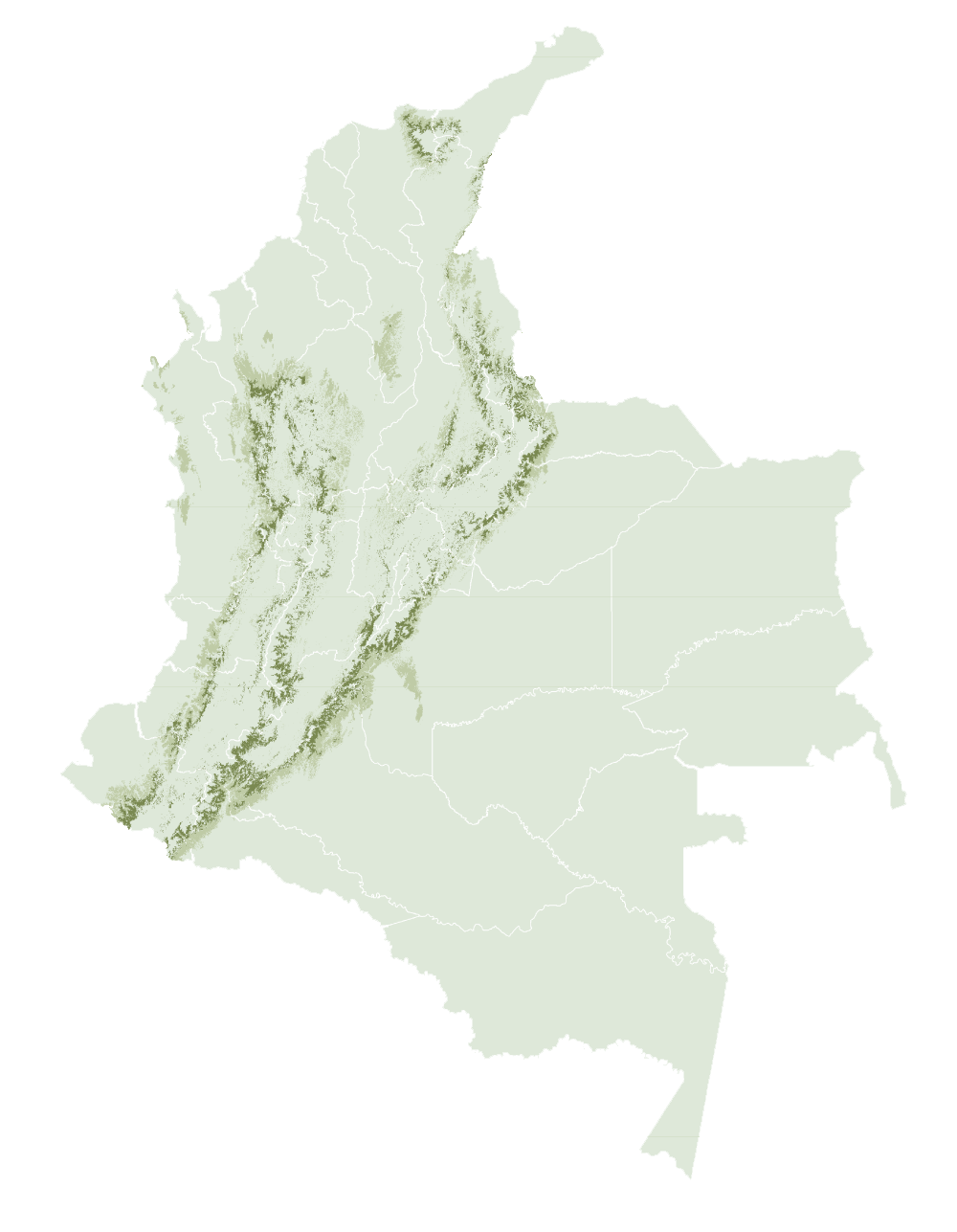Functional traits of woody plants are essential to understand the vulnerability of forests to climate change, their capacity to offer ecosystem services, and to guarantee their adequate management and conservation. In spite of this, there are great information gaps for all forest ecosystems of the country.
▲ Continue ▼
Diversity of functional traits for woody plants in the forests of Colombia and number of species measured for each functional trait
Functional ecology, as the variety of forms and strategies organisms have to use resources and transform the environment2, emerges as a theoretical framework that has great importance in the production of knowledge regarding the response potential species have in relation to environmental change and the influence they may have on ecosystem processes and services.
Select a number to continue
See data for each trait ▶In woody plants, the traits with greatest sampling are leaf area, specific leaf area, leaf content of dry matter, branch density and dispersion syndrome. It must be highlighted that there is a lack of information for root traits in all the forest ecosystems of the country.
◀ Previous Next ▶Reproductive traits
Vegetative traits
Vegetative traits are related to the establishment potential of species in new environments, and they determine the position of plants in vertical gradients, as well as their competitive vigour.
Hydraulic traits
Forests in Colombia cover close to 53 % of the territory1 and offer ecosystem services as important as the regulation of climate and water cycles, on which human populations depend. The offer of these services relies on ecosystemic processes, which are affected by the characteristics of tree species that live in those areas. In other words, the offer of ecosystem services is determined by the functional diversity of plants species, which refers to the variety of forms and strategies that plants have to use resources and transform the environment2.
LThe functional features of plants may be grouped according to their functions: 1. Leaf traits that are related to carbon sequestration and hydrological relations of plants; 2. Stem and root traits that are important for water and nutrient transport and the mechanical support of plants href="../../referencias.html#106">3; 3. Vegetative and root traits that determine the access to light and growth rates; 4. Reproductive traits related to the dispersal and establishment of individuals. Although there is still no complete regional data or analysis regarding the functional traits of woody plants in Colombia, studies on the functional diversity of forest ecosystems in the country have increased in the past years. The growing interest in incorporating this dimension of biodiversity in forest ecological studies in the country is evidenced here.
This analysis was developed based on the information collected by around 60 researchers working on 2,265 tree species that are distributed in the different forests of Colombia. Leaf traits had the best representation in the data of all studied forests. These traits are important due to their influence on primary productivity, leaf litter decomposition, and nutrient cycling4. It must be highlighted that there is little information on root traits in all studies of forest ecosystems in the country.
Functional diversity for the management of biodiversity
Although the focus on functional ecology has been adopted by many institutions in Colombia, there are still groups of key traits and ecosystems that are lacking information. The challenge is not only to increase the number of species and ecosystems with information on functional traits, but also to relate this knowledge with research and management questions at different biological scales such as: identification of priority conservation areas, ecosystem restoration to recover ecosystem processes, management of biological invasions, and adaptation to climate change, among others. This information should be available to the scientific community, translated, and incorporated in strategies for decreasing the loss of ecosystem functions.
Map of traits per ecosystem
Tropical Rainforest in the Amazon
Tropical Rainforest in Magdalena
Tropical Rainforest in the Pacific








 PDF version
PDF version Methods (in Spanish)
Methods (in Spanish) References
References Share
Share